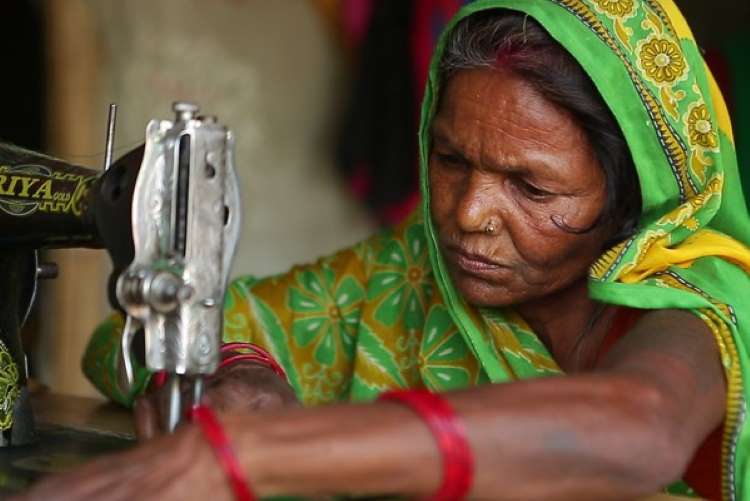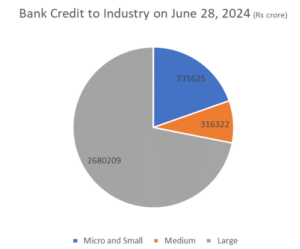
Building on the success of UPI, the Reserve Bank of India has introduced the Unified Lending Interface, a new platform designed to provide quick and easy credit to rural and small borrowers. Currently, these borrowers face significant delays and challenges in securing financial assistance, particularly in sectors like agriculture and micro, small, and medium enterprises (MSMEs), where the demand for credit is substantial but largely unmet. RBI Governor Shaktikanta Das, announcing the launch of ULI, emphasised its potential to expedite the lending process. The platform is expected to be rolled out nationwide soon, making it accessible to a broader audience.
Similar to the UPI (Unified Payment Interface) which revolutionised retail payments in India, ULI seeks to transform the lending environment in the country.
READ | Capital goods sector: From import dependence to export excellence
What is Unified Lending Interface
The pilot project for a public tech platform facilitating frictionless credit was announced in August last year. It seeks to enhance efficiency in the lending process by reducing costs, speeding up disbursement, and increasing scalability.
India is currently experiencing a rapid digital transformation, leading to the widespread adoption of digital public infrastructure. Financial institutions and technology companies have developed innovative solutions for payments, credit, and other financial services. However, while the data necessary for credit evaluation is available from various sources, including government agencies, banks, credit bureaus, and identity verification authorities, it is often fragmented and difficult to access. This fragmentation hampers the efficient and timely delivery of credit, especially for rule-based lending.

ULI addresses this issue by facilitating the seamless flow of digital information, such as land records from various states, directly to lenders. This will significantly reduce the time required for credit appraisals, particularly for smaller and rural borrowers. ULI’s architecture is built on standardised APIs (Application Programming Interfaces), designed for a ‘plug and play’ approach that ensures digital access to information from diverse sources. This enables borrowers to receive seamless credit delivery, with reduced turnaround times and minimal documentation.
India’s digital infrastructure push
The government’s efforts to create digital infrastructure are paying off, positioning India’s digital push as key to enabling equitable growth. According to a Moody’s Ratings report on August 27, this focus on digital infrastructure distinguishes India from many of its emerging market peers. India has outpaced many other emerging markets in recent years, driven by rapid digital infrastructure development, including initiatives related to identity, digital payments, and record digitisation.
The ‘new trinity’ of JAM (Jan Dhan, Aadhaar, and Mobile), UPI, and ULI represents a significant leap forward in India’s digital infrastructure journey, according to the government. This trinity is deployed to facilitate direct cash transfers into beneficiaries’ bank accounts, promoting financial inclusion.
UPI has been instrumental in expanding digital retail payments in India. Initially involving banks, the UPI platform has grown with the inclusion of non-bank third-party app providers and the widespread adoption of QR codes. This combination has made UPI a robust, cost-effective, and versatile retail payment system, garnering global interest.
If implemented as planned, the Unified Lending Interface has the potential to revolutionise financial inclusion in India. By bridging the gap in formal credit delivery, ULI could free countless individuals from the clutches of exploitative moneylenders. This direct online approach offers a far more sensible solution than the complex financial instruments that contributed to the US subprime loan crisis.
Challenges ahead
While the widespread adoption of digital lending platforms is likely to spur a credit boom and increase lending volumes, this rapid expansion also presents new challenges for lenders.
One major concern is the potential for increased loan recovery risks. During economic downturns, small borrowers are particularly vulnerable to cash flow disruptions. As lending volumes grow, the likelihood of encountering such borrowers also increases, leading to potential difficulties in recovering loans, especially if the credit process is overly streamlined without adequate risk assessment.
Unlike UPI, which primarily facilitates payments, ULI directly facilitates credit, making lenders responsible for the associated recovery risks. As a result, lenders must carefully consider these risks and implement effective strategies to mitigate potential recovery challenges.
In India, the lack of demand for credit has not been a longstanding issue. The increasing adoption of digital platforms and the expansion of small banks have already driven significant growth in lending volumes. The primary challenge has consistently been loan recovery. Therefore, as digital lending platforms become more prevalent, lenders must address the risks associated with rapid growth to ensure sustainable credit delivery.
Underserved populations around the world desperately need financial solutions that address information asymmetry at the grassroots level. Rather than relying on intricate debt asset restructuring by investment bankers, India’s ULI platform could offer a more effective approach. However, whether ULI will succeed remains to be seen.
